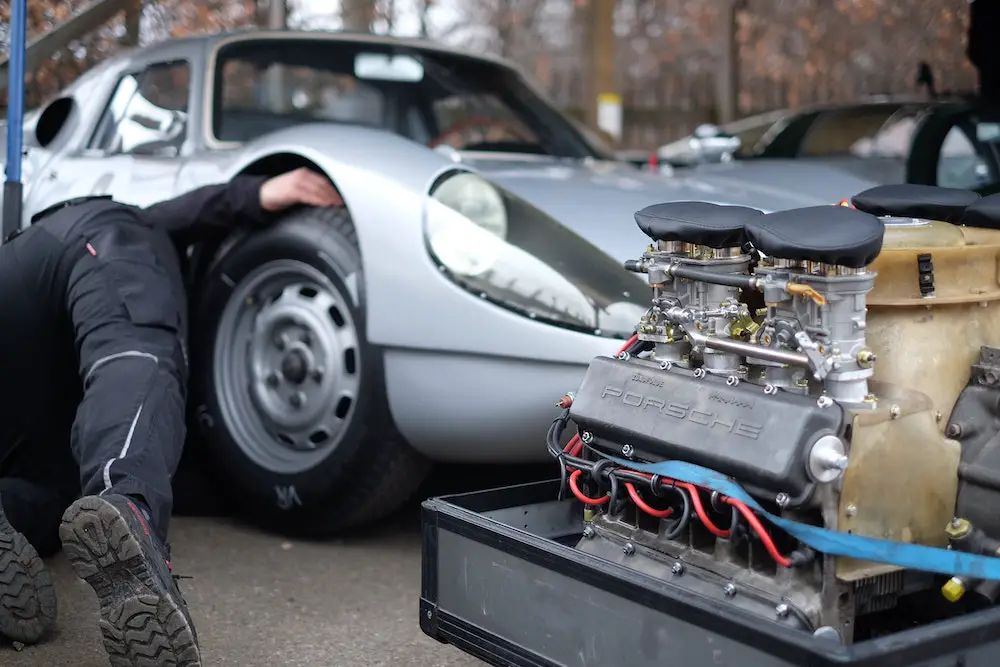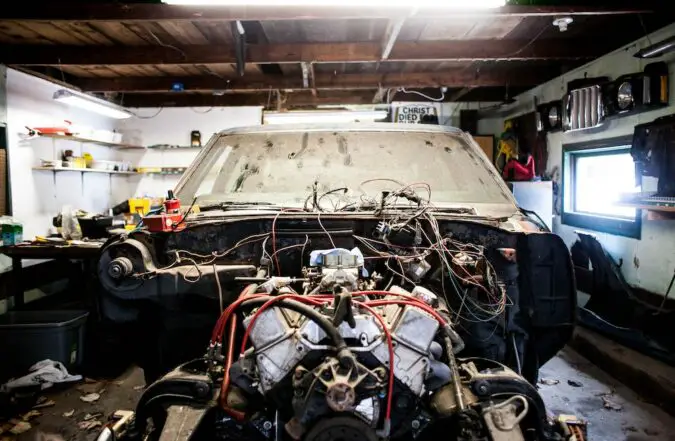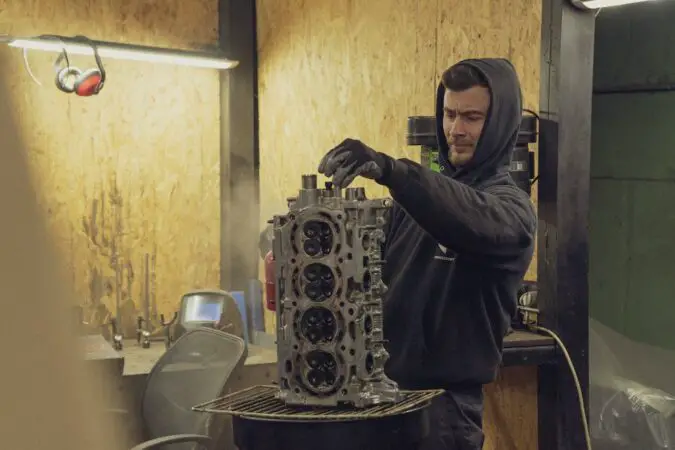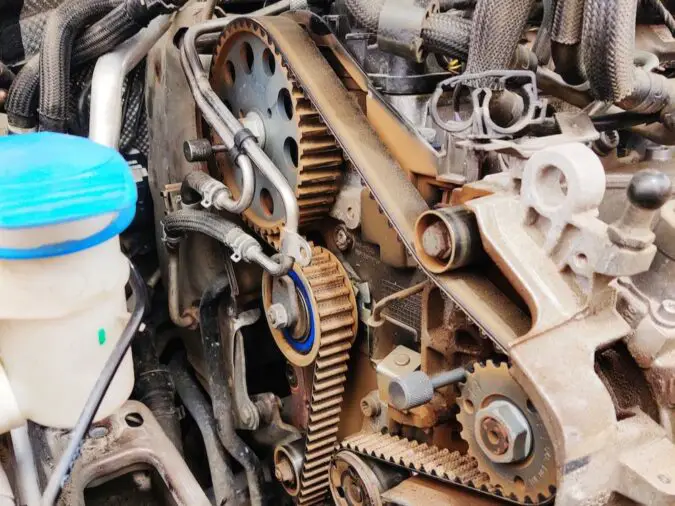It’s always a proud moment when you purchase a car and drive it straight out of the lot. It’s all joy with your new ride until it suddenly doesn’t start. It could turn out to be a huge nightmare, such as a seized engine.
Owning a car is a huge responsibility. First off, you have to understand that your car is a powerful machine. Thus, you should cater to its every need. A seized engine is not uncommon among cars. Every automobile owner should know what a seized engine is, and understand the signs of one to keep an eye out for it.
Then, choose what to do next if you ever encounter a seized engine. Maintenance is obviously key to avoiding engine seizures, but even if you followed the instruction manual to the letter, you could still encounter a seized engine. Therefore, even if your maintenance is up to date, always expect the possibility of coming up against a seized engine.
This is our guide on everything you need to know about a seized engine.
- What’s A Seized Engine?
- Signs Of Failure
- Possible Causes
- What To Do Now?
- How To Avoid It?
- Repair Costs
- Rebuild vs Replacement
- FAQs
Engine Seized
An engine is also known as the heart of the car, and it consists of many moving parts. With so many components working together to create this motion of propelling your car forward, a lot of things can potentially go wrong. With all those moving parts inside your engine, these parts must move as smoothly as possible.
When your engine doesn’t move smoothly, that is when mechanical failures can occur. All those metal components start to rub with each other, which in turn creates massive amounts of heat due to friction. This then causes the engine to come to an abrupt stop.
More often than not, the culprit is engine oil. Most vehicle owners underestimate the function of the engine oil and what it does for your engine. You must know how to choose the best oil for your car and when to change your engine oil.
Symptoms Of Seized Engine
You must know what to keep an eye out for if you think that your engine is misbehaving. Usually, if you can find out the cause as early as possible, the chances that your engine is suffering any crucial damage due to the cause is minimal.
Seized Engine, Common Symptoms #1: Unusual Noise From Your Engine
There are distinctive sounds that you need to keep your ears cocked out for which could mean an engine seizure is not far away.
When the problem is at the initial stage, you will hear light tapping or knocking sounds when driving the car. Eventually, the noises will intensify and you will hear thundering noises of metal banging together. This happens when the piston rod bangs into the crankshaft and this is known as a ‘dead knock’
Seized Engine, Common Symptoms #2: Burnt Wires
Though a seized engine is not a direct result of burnt wires, being able to identify when your wires are burnt is a sign that your engine is seized. When you try to start your car, and the engine seized up, the starter will do its job attempting to crank the engine. However, since the engine is seized up, it’s not going to budge.
The starter is continuously going to build up the heat, so the wires will soon overheat. This results in burnt wires. The burnt wires will emit smoke and a burning smell which could mean that your engine is seized.
Seized Engine, Common Symptoms #3: Loose Engine Components
Engine seizures due to an engine defect could be the result of a loose internal part or a dislocated part getting jammed in one of the moving components of the engine which results in an engine seizure.
It’s possible to identify this from the noise the engine makes when you try to start it. You’ll hear a clanking sound but the only way to know for sure is to inspect the engine block for misplaced parts.
Seized Engine, Common Symptoms #4: The Engine Doesn’t Start
A seized engine means your car won’t start. Anything that uses the battery such as the radio, lights, the AC might still be functional but trying to run the engine will not result in anything.
If any of these signs appear from your engine block it’s probably an engine seizure.
What Causes An Engine To Seize
1. Insufficient Engine Oil
As mentioned previously the importance of engine oil cannot be overlooked. Once the amount of engine oil present to lubricate the moving metal parts of the engine is scarce the engine fails to function properly. The friction formed when the lubricant is not available is enough to increase the temperature significantly which could result in engine seizure.
Also, the liquid nature of the engine oil acts as a coolant as well as an insulator. Again, this is contributing to making sure the engine temperatures are kept in check. It’s pivotal that you know when to buy new engine oil and change it.
2. Damaged Components
We all know the energy produced by the engine that allows the car to propel forward is generated by small controlled explosions inside the engine. These explosions create immense toil on engine components. This leads to parts of the engine breaking or coming loose.
If a part is damaged, the engine won’t be able to function properly. Similarly, if a component of the engine came loose, it could wedge in between the moving sections of the engine resulting again, in an engine seizure.
3. Waterlogged Engine
This happens when water finds its way inside the combustion chamber of the engine. Unlike the air and fuel that are supposed to be inside the combustion chamber, water doesn’t compress. This would result in a sudden halt to your engine. When the pistons are unable to compress, the result is seen in the connection rods inside the engine.
These connection rods bend, which then causes an engine seizure. This is also known as ‘Hydrolock’. The main cause for this happening is driving through large puddles or any other body of water. If the depth allows water to reach the engine, water eventually travels inside the engine.
If the engine is at low RPMs, you may be able to escape without severe engine damage. At higher RPMs, bent connecting rods and busted pistons are almost guaranteed.
4. Engine Overheating
The temperature of your engine should always be kept in check, but numerous reasons could cause engine overheating. The increase in heat could result in expanding the pistons. When this happens, the pistons don’t fit anymore in their relevant places, and this damages the piston walls.
That’s the least of your problems. A blown engine is much worse. Overheating could result in a blown gasket. Fixing a gasket is not often an option. Once it is blown it would require a replacement which is not cheap
5. Rust
Rust is always a bad sign for a car internally or externally. And if the engine is what’s affected it, this could be a huge issue. Rust in an engine is not common since lubrication provided by the engine oil makes sure that the engine does not rust.
Old vehicles are more prone to rusting especially if they are allowed to sit for a long time without the engine actually being started. When the car is not used and the engine has not worked for a long period, engine oil does not get the opportunity to flow through the engine block and coat the surface to prevent rusting.
Even though the engine hasn’t been used after a while, the engine oil starts to evaporate anyway.
Water could cause engine rust as well. Once water enters your engine, even if it doesn’t cause any problem immediately, it could have adverse effects in the long run, so it should be removed as soon as possible.
6. Vapor Lock
The probability of engine damage due to vapor lock is rare but the engine will not start. It is a problem caused by the fuel system and is often seen in older cars with low-pressure fuel systems.
This occurs as the pressure when pumping fuel to the engine is low, it then turns the fuel to a gas before reaching the engine. This starves the engine of fuel and the car will start to sputter and eventually come to a stop. It’s similar to when you run out of gas. No matter how hard you try it is impossible to start your engine again.
Engine Blown vs Frozen vs Seized
Even though a blown engine and a frozen engine are different manners of engine seizures, knowing them individually could help you a lot. Knowing the difference allows you to figure out what kind of fix your car requires and how hard of a fix it is.
1. Blown Engine
9 out of 10 times if you encounter a blown engine, it’s because of maintenance. You haven’t either gone by the book of your manufacturer which suggests when and how to maintain your ride, or you just neglected or postponed maintenance. Other than an oil change, changing the air filter, and flushing the coolant are also important.
The air filter is the lungs of the engine. It filters the air that flows through the engine and makes sure to block out any impurities from entering the engine.
Over time, the air filter gets clogged with dirt and debris. If it is made of foam, the filter decays, and eventually, some of that nasty dirt particles sneak into your combustion chamber. Though these particles do not combust, they scrape through your combustion chamber, and with time, your compression would start to dull. It is super necessary that you change your oil filter when needed.
With the coolant, nobody thinks they need to be changed, and never even thought of it. But with time, the fluid becomes acidic, and seepage allows it to veer from its designated path. The coolant enters places it shouldn’t be getting into. For example, it can enter the combustion chamber. Later, it mixes with the engine oil, or even enters the fuel lines which can cause a blown engine.
Many Potential Causes…
These issues occur 9 out of 10 times. The other occasion is when you push your engine beyond its limit. To get better performance you could mess with the air intake or amount of fuel injection into the engine. When you get the ratio wrong and push the engine beyond its capabilities, your engine is in huge trouble. If its RPMs surpass the limit of the engine, it could blow up in a remarkable fashion.
When your engines are pushed to the limit, a mistake in shifting could cause serious problems.
Eventually, any of these could lead to a blown gasket or due to overheating expansion of pistons results in it seizing up. Or, the rods could break and blow their way right out of the engine.
2. Frozen Engine
If your car suddenly stops working in the winter, the cause could be a frozen engine.
Obviously, the first thought that comes to mind is just to keep driving through a frozen engine and the heat created while the engine is working will hopefully unfreeze it.
However, it’s imperative to not drive with a frozen engine. It could cause the engine to overheat and cause even bigger trouble.
You’ve got to park your car in a warm place and let it sit there for a while until the engine frees up. If you want the process to move a little faster, you can add a small space heater next to the car.
Once your car is parked in a warm space let your engine thaw out. One of the reasons that your engine freezes are the coolant has passed its due date. Once your engine is unfrozen, immediately remove the existing coolant and replace it with new antifreeze. That way you can avoid a frozen engine in the future.
How To Unseize An Engine
Once you determine that you are encountering a seized engine your options are limited. More often than not, replacing an engine is cheaper than rebuilding it. If you have a high-performance engine and not the stock engine, attempting a repair is an option rather than spending an extravagant amount by trying to get another engine.
If you are trying to rebuild your engine, it would mean taking the engine completely apart and assessing every component for damage. This is followed by replacing the damaged components. This is a very tedious process and labor costs will add up eventually.
If your engine is seized up due to rust, there are some sprays and liquids that remove rust from your engine in the market. It’s certainly worth a shot before deciding to scrap your engine.
If your engine is suffering from vapor lock you have the option of trying to bring the temperature down so that the vaporized gasoline can turn into a liquid. You can park it in a cold environment or try spraying some water on the engine block which could solve a vapor-locked engine.
In the case of a hydro lock, the ability to repair your engine depends on the damage. If the amount of water that flooded the engine is minimal, you can remove the spark plugs.
Eventually, the water inside the engine will sprout out clearing the cylinders. The spark plugs should be replaced as soon as possible. But if the amount of water in your engine is significant, or it has been inside the engine too long this fix will not work. You will have to take your car to a mechanic.
How To Avoid A Seized Engine
There is no magic pill that you can feed your engine with to protect it from seizures. Almost all engines encounter a seizure some find a way back while others are discarded.
The only job that can be done is maintenance. Follow the manufacturer’s guide on every step. If you suspect that your engine is malfunctioning, let an expert or find a mechanic take a look at it. That way he will be able to diagnose the cause at its roots and find a solution.
How Much To Fix A Seized Engine
The amount of money you would have to allocate towards fixing a seized engine can vary anywhere from 20 bucks and in some cases 4000 or 5000 dollars. It depends on the degree of damage the engine suffered.
If your engine seizure is a result of vapor lock all you need to do is splash some water on it. And this will not cost a dime.
If your engine seizure is a result of letting your car sit for too long, you can replace the engine oil let it sit for a few days, and try to unjam it with a breaker bar. In this case, all you will be paying for is new engine oil.
For an engine suffering from a hydro lock, the fix could range from buying a couple of new spark plugs (and saving some labor costs by learning how to remove and install new spark plugs and changing spark plugs) to up to 3000 dollars.
If none of the above is the reason for your engine seizure, that means bad news. If your engine comes to an abrupt stop while driving or just does not start constantly making clanking and banging sounds that can only mean physical damage to engine components.
Attempting to fix this would lead to a complete engine rebuild and that would definitely cost upwards of 3000 dollars to repair.
Can You Rebuild A Seized Engine
Knowing the process that goes down during an engine rebuild will give you an idea of why engine rebuilds are so costly.
First off, the small block which is the lower half of the engine is removed. This is followed by a complete disassembly. Each part individually will be cleaned and inspected for damage. This includes the valves, gaskets, bearings, piston rings, timing belts, and spark plugs which are just a few of the parts that go through close inspection.
Once identifying which of the above needs to be replaced and salvaging what’s possible, the focus shifts to the cylinders. The cylinders are primed to ensure the piston rings seal properly with the cylinder walls.
Then the engine is bored and aligned with the crankshaft. After your engine goes through the entire process then it is reassembled and reinstalled in your car.
When To Give Up On Your Seized Engine
Knowing when to give up on your engine will allow you to save a lot of money. Identifying the cause that led the engine to failure can give an idea of the cost. As mentioned earlier, deciding to scrap your engine is not necessary unless there are signs of physical damage inside your engine.
Replacing your engine rather than rebuilding it is much more reliable and usually costs less than a rebuild. Although on some occasions, it might be slightly higher. But you do not know how much a rebuild is going to cost until you get the bill handed, so it’s a much wiser choice to replace it which is better in the long run.
For a regular car that’s equipped with a 4-cylinder engine, the price of a new one starts at around 4000 dollars. If your car runs on a V6 engine and you decide on a replacement, a new V6 engine is going to cost 5500 dollars.
The price of a V8 engine starts from 7000 dollars. Before deciding to go for a new V8 engine it’s better to ask your mechanic for estimation of repair costs and make your decision from there.
Rebuild vs Replace
If you replaced your stock engine with a much more expensive high-performance engine, choosing to go through a complete engine rebuild is not a bad choice. That’s considering that you already invested a lot on a custom engine and the thought of scrapping it could be daunting. That being said, with a complete engine rebuild you will be able to salvage your engine.
All things considered, before deciding to scrap your engine, it’s best to let an expert take a look at it. It is not uncommon for small issues to be misdiagnosed as engine seizures.
A dead battery, dirty or loose battery terminals, dead alternator, bad starter, failed ignition switch, defective spark plugs, clogged fuel filter, malfunctioning fuel pump, or an empty gas tank can all look similar to an engine seizure if you don’t know what to look for. So before deciding to scrap your engine it’s best to be 100% sure that you don’t have any other options.
FAQs On Seized Engine
If you’re still curious to learn more about a seized engine, our FAQs here might help…
How To Tell If Engine Is Damaged From No Oil
A car’s engine heavily depends on motor oil, not just for cooling, but also for lubrication. Without any oil, an engine’s internal components would continuously grind against each other. Thus, causing significant wear and tear, in addition to catastrophic internal damage. If your engine doesn’t have enough oil, there are some tell-tale signs that might give it away. In some cars, you’ll notice an oil pressure warning light or oil warning light appear on your dash. Otherwise, you may also be able to spot a burning oil smell, in addition to grinding noises from the engine. Otherwise, other symptoms include an overheating engine, as well as poor performance.
How To Fix A Locked Up Engine
If your engine has locked or seized up, your repair options are fairly limited. For a severe engine seizure, oftentimes, the best option you have is to have the engine rebuilt or replaced outright. The former entails tearing apart the entire engine, and re-conditioning it. Therefore, all the worn-out parts are replaced with new ones, while keeping a part or two from the engine that’s working just fine. Engine rebuilds are expensive, typically costing at least $2,500 to $3,000, but they could easily rise beyond this. Should the damage be too severe or if there are enough parts that you can salvage, it might be necessary to replace the entire engine, instead.
How To Tell If Engine Seized
Should your engine seize up, there are several tell-tale signs that would immediately alert you as to what’s going on. For starters, you’ll notice tapping or knocking sounds coming from the engine. That’s likely due to internal parts of the engine being dislocated, and now bouncing around freely inside the engine. This may be accompanied by a burning smell or even smoke. This is due to all the overheating, which could burn and melt surrounding components, such as wires and cabling. Otherwise, another common symptom of engine seizure is seeing how your car will outright refuse to start the engine.
Can Low Oil Cause Car Not To Start
Motor oil is crucial for every engine. Its functions range mostly between providing cooling and lubrication to an engine’s many internal components. Therefore, driving with either low or non-existent oil levels is a bad idea. In some instances, low oil levels can cause your engine to seize up and prevent your vehicle from being able to turn over. When you’re on the move, the engine might even cut out and stall while you’re on the move. The only way to properly fix this now is by rebuilding the entire engine. Basically, taking it apart and salvaging the good parts, while replacing all the worn-out or faulty parts of the engine.
How To Tell If You Got Water In Your Engine
Water shouldn’t be inside an engine… And if that is the case, it could cause some serious damage if you don’t get it looked into right now. This is a problem that’s common for cars that get trapped in a flood, where flood water is easily able to make its way into the engine. There are even unique ways to tell if your engine has water in it. For example, you can try pulling out the motor oil, transmission fluid, and differential drain plug. Now, look at the respective fluids. If they appear as milky, diluted, and much more brownish than before, it’s a clear sign that there’s water inside their respective tanks/reservoirs.




